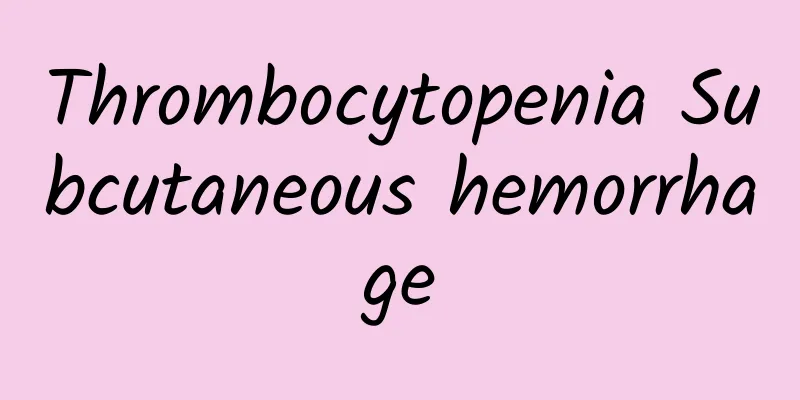The efficacy, effects and contraindications of Terminalia chebula

|
Everyone has experienced diarrhea. For example, sometimes eating too much cold and high-calorie food may cause diarrhea. However, if you have diarrhea all the time, you need to pay attention to it. This is likely to be enteritis. The Chinese herbal medicine Terminalia chebula has the effect of treating enteritis and diarrhea, but maybe everyone is not very familiar with it. So what are the effects, functions and taboos of Terminalia chebula? For this question, let's take a closer look at the detailed introduction in the article. "Bencao Jingshu" records: Terminalia chebula tastes bitter, has a mild nature and is non-toxic. Bitterness is used to purge, astringency is used to contract, warmth is used to unblock, and only astringency is able to cure cold air, bloating and pain in the heart and abdomen; only warmth is able to promote digestion. Zhen Quan used it to stop water in the intestines, Xiao Bing used it to stop intestinal obstruction and chronic diarrhea, Su Song used it to treat intestinal wind, bloody diarrhea and clearing loose stools, and Zhu Zhenheng used it to fill the intestines, but their bitter taste is astringent and only treats the symptoms but not the root cause. Terminalia chebula has antibacterial and antiviral therapeutic effects. It has a strong inhibitory effect on Shigella dysenteriae, and its basic principle may be that tannin causes bacterial protein to coagulate; it has astringent effect: it has a protective effect on mucosal ulcers caused by bacillary dysentery or enteritis; it also has antispasmodic effect: terminalia chebula has a smooth muscle antispasmodic effect similar to papaverine. It is used to treat long-term diarrhea, dysentery, chronic dysentery and chronic colitis, because of its astringent and antibacterial effects. The effect of stewed Terminalia chebula is good, but it is rarely used alone. It is often used with other astringent drugs. For example, it is used to treat chronic dysentery and blood congestion with gallnut, dried plum, and white bark of elm root; it is used to treat chronic diarrhea with scutellaria and poria. If the diarrhea caused by yin deficiency and internal heat is severe, poppy shell, roasted ginger, orange peel, etc. can be used. Prescription such as Terminalia chebula powder. It can also be used for cough with excessive phlegm. For the treatment of dry cough and blood in sputum caused by tuberculosis, use raw Terminalia chebula with pumice and melon peel; for the treatment of cough, sputum and aphonia caused by chronic pharyngitis, use Platycodon grandiflorum, licorice, etc., such as Terminalia chebula Qingsheng Decoction; holding raw Terminalia chebula in the mouth can help to a certain extent, but it tastes very bitter, so it is better to make it into pills with pure honey for oral dissolution. It has been recently reported that chronic bronchitis can be treated with 3g of Terminalia chebula and 9g of Schisandra chinensis, boiled with a pig lung and taken in the recipe of Bufei Decoction. |
<<: The efficacy and contraindications of Terminalia chebula
>>: The efficacy and function of citrus flowers
Recommend
How to make Sichuan Fritillary Lemon Tangerine Peel Paste
Sichuan Fritillary Lemon Tangerine Peel Paste is ...
What medicine can cure heat poison quickly?
When heat toxins appear in the body, it should be...
What diseases can generally be cured by bloodletting?
Bloodletting therapy is quite common in our daily...
What causes herpes on the glans penis?
Herpes on the male glans is what we often call ge...
What is the bone below the neck called?
The area below the neck belongs to the cervical v...
The best way to prevent coronary heart disease
Coronary heart disease is extremely harmful. If no...
Does a fever increase your heart rate?
Colds and fevers are the most common diseases in ...
Farts are smelly and there is no bowel movement
Farting is very smelly and you don’t have a bowel...
There are two horizontal lines on my neck. What's going on?
Horizontal lines on the neck are called neck wrin...
What causes decreased urine output?
For the human body, urination is a normal physiol...
Symptoms of cesarean section wound inflammation
Caesarean sections are becoming more and more pop...
How is Kaposi sarcoma treated?
Kaposi's sarcoma is a central vascular tumor,...
What to do about ulcerative stomatitis
Ulcerative stomatitis, commonly known as oral ulc...
What are the adverse reactions of traditional Chinese medicine related to?
Why can our country gain a foothold in the world?...
Causes of leukopenia
Many friends will have a white blood cell item wh...









